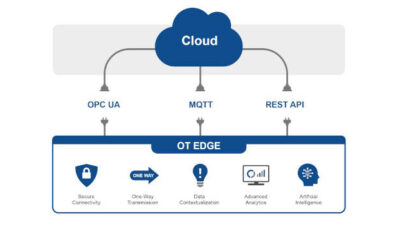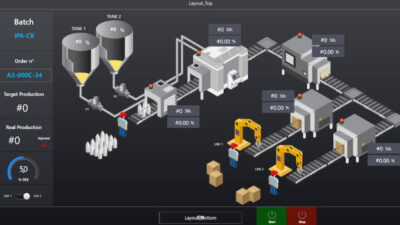Energy consumption can represent up to 35 percent to 40 percent of data center operational costs. The issue has not been well understood because electricity costs often default to facilities budgets, not to the IT ledger.
Hewlett-Packard has shown itself to be an industry leader when it comes to environmentally friendly product design and manufacturing processes. As impressive as those efforts are, however, they may pale against HP’s leadership in promoting “green” IT management practices.One of the primary issues HP has tackled is data center energy use, which—due to skyrocketing costs—has become a top priority for IT executives. According to a report from the EPA, U.S. data centers consumed about 61 billion kilowatt-hours of electricity, or roughly 1.5 percent of all U.S. electricity in 2006. That’s more than all the televisions in the U.S., and translates to a cost of $4.5 billion. And that usage is expected to double by 2012. Info-Tech , based in Ontario. But for all the potential cost savings from eco-friendly data centers, only one-sixth of companies allocate budgets for green purchases, according to The Green Index from Info-Tech. The same report concludes that one-quarter of IT executives are “very” or “extremely” concerned about green issues, like energy efficiency. There’s clearly a gap between recognition of the issue and activity to solve it, says Hay.“Green budgeting hasn’t caught on because, first and foremost, many budget items require top-level approvals.The gap between concern and action represents a great market opportunity for a vendor like HP, which makes energy-efficient servers and virtualization software, and also has the know-how to help other companies get greener.“This is a problem nobody thought about five years ago,” says Brian Brouilette, VP, of mission critical network and education services, HP. “But by 2012, everybody will be taking action. Many companies are just coming to grips with the true cost of powering servers and cooling data centers.”Demand for computing power and the rise of higher-density blades capable of running faster and hotter contribute to the problem. But server manufacturers also have chosen higher-power specifications than their products actually need. Plus, many data centers were built before energy consumption was an issue.“It’s important to remember that the life cycle of data centers is 10 years to 20 years, while the life cycle of the technology housed within them is typically three years,”says Brouilette. In the past, floor planning and placement of equipment were haphazard.As a result, energy consumption can represent up to 35 percent to 40 percent of data center operational costs. The issue has not been well understood, according to Brouilette, because electricity costs often default to facilities budgets, not to the IT ledger.But beyond the cost, some companies are reaching maximum power capacity. One London-based company with which Brouilette consulted was told there was no more power to buy. The local utility was not going to build a new substation or otherwise expand capacity. Such “power-capping” is a big issue in Asia, where rolling summertime blackouts are common. “We’re closer to the edge than most people realize,” says Brouilette. Cutting data center costs So how can data center managers address the problem? Fundamentally, companies should seek better visibility into both energy usage and server utilization, as the problems go hand-in-hand.Audits and visual inspections are a good place to start. They often identify simple steps and adjustments to physical layouts—like interchanging hot and cold aisles of racks. To optimize placement of vents and exhausts, companies may need to take a more sophisticated view of air flow above the ceiling and below the floor, as well as around the blades and servers themselves.High data center energy costs were largely caused by technology advancements, and new technology will be used to manage them. New metering tools, for instance, make it possible to track consumption down to the level of specific racks of IT equipment or even specific blade servers. HP’s Thermal Zone Mapping technology Dynamic Smart Cooling strengthens the control loop with the infrastructure by allowing the dynamic control of cooling fans within individual blade enclosures.Collectively these tools give data center managers the ability to better analyze and manage energy consumption—just like IT management software helps them manage service capacity. HP offers software that allows companies to track computing loads and automatically expand server capacity to meet demand peaks. Virtualization of this type is only in its infancy, but will become more popular as companies seek to reduce energy costs. For many companies, the first part of their virtualization initiative is likely to be pulling the plug on under-utilized equipment, and putting an end to over-provisioning redundancy.Typically, cost savings can be 10 percent to 40 percent, though in some cases much greater, especially if analysis shows that companies can avoid building entirely new data centers. Brouilette cites the example of one company that was underutilizing about 30 percent of its 4,000 blades. Solving that problem meant it could shelve expensive plans for building a new data center.The concept of closely monitoring energy use in the data center should not be foreign to manufacturers, who closely track it on the plant floor. Monitoring technologies in the data center are the IT equivalent of variable frequency drives and programmable controllers, or other tools that govern the use of motors, fans, and pumps on the shop floor.As with its supply chain expertise, HP defined its best practices for data center management largely through its own experience. The company reduced the number of its own data centers from 85 to just six. By consolidating and virtualizing its server base and adopting advanced design and systems management techniques, HP saved tens of millions of dollars and greatly reduced greenhouse emissions in the process. Today, HP has a team of about 5,000 engineers helping clients increase the energy efficiency of data centers worldwide.



